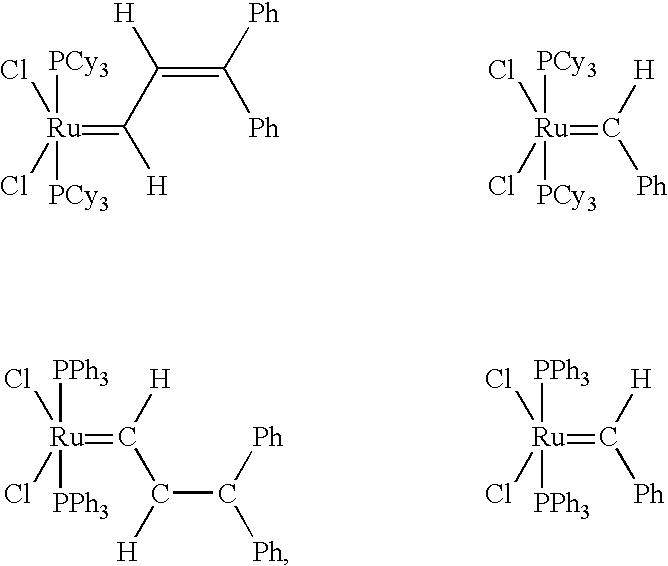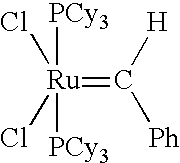Pipe made from metathesis polymerized olefins
a polymerization reaction and metathesis technology, applied in the field of pipe made from metathesis polymerized olefins, can solve the problems of catalyst system significant drawbacks, short pot life of polymerization reaction, and inability to manufacture pipe using metathesis polymerized olefins using such techniques
- Summary
- Abstract
- Description
- Claims
- Application Information
AI Technical Summary
Benefits of technology
Problems solved by technology
Method used
Image
Examples
example 1
A two inch diameter reinforced polydicyclopentadiene (PolyDCPD) pipe was produced using a centrifugal casting method. A standard fiberglass fabric was used as the reinforcing material. The fiberglass was sized with a methacrylatochromic chloride complex sizing agent purchased from Du Pont under the trademark "Volan". The following components, including an intumescent flame-retarding agent purchased from Clariant under the trademark Exolit IFR-11, were mixed to make the DCPD resin / catalyst mixture:
The following process steps were then used to produce the pipe:
1. The Volan sized fiberglass fabric was rolled around a tube (mandrel) smaller than the inside diameter of the desired finished pipe. The number of layers and weight of the fabric may vary with the diameter and pressure rating of the finished pipe.
2. The fabric and tube were inserted into the mold tube, and the tube was spun at a high enough revolutions per minute (RPM) to "unwind"the fabric from the mandrel.
3. After the mandre...
example 2
A 2-inch diameter reinforced DCPD pipe was prepared as in Example 1. This pipe was tested under various ASTM D test conditions. The results were as follows:
The impact resistance test was performed on less samples than customary for ASTM D Test 2444. The DCPD pipe impact resistance data indicates that, on average, the DCPD pipe samples did not fail upon being subjected to test conditions as great as 120 foot-pounds.
PUM
| Property | Measurement | Unit |
|---|---|---|
| temperature | aaaaa | aaaaa |
| diameter | aaaaa | aaaaa |
| temperature | aaaaa | aaaaa |
Abstract
Description
Claims
Application Information
 Login to View More
Login to View More - R&D
- Intellectual Property
- Life Sciences
- Materials
- Tech Scout
- Unparalleled Data Quality
- Higher Quality Content
- 60% Fewer Hallucinations
Browse by: Latest US Patents, China's latest patents, Technical Efficacy Thesaurus, Application Domain, Technology Topic, Popular Technical Reports.
© 2025 PatSnap. All rights reserved.Legal|Privacy policy|Modern Slavery Act Transparency Statement|Sitemap|About US| Contact US: help@patsnap.com



